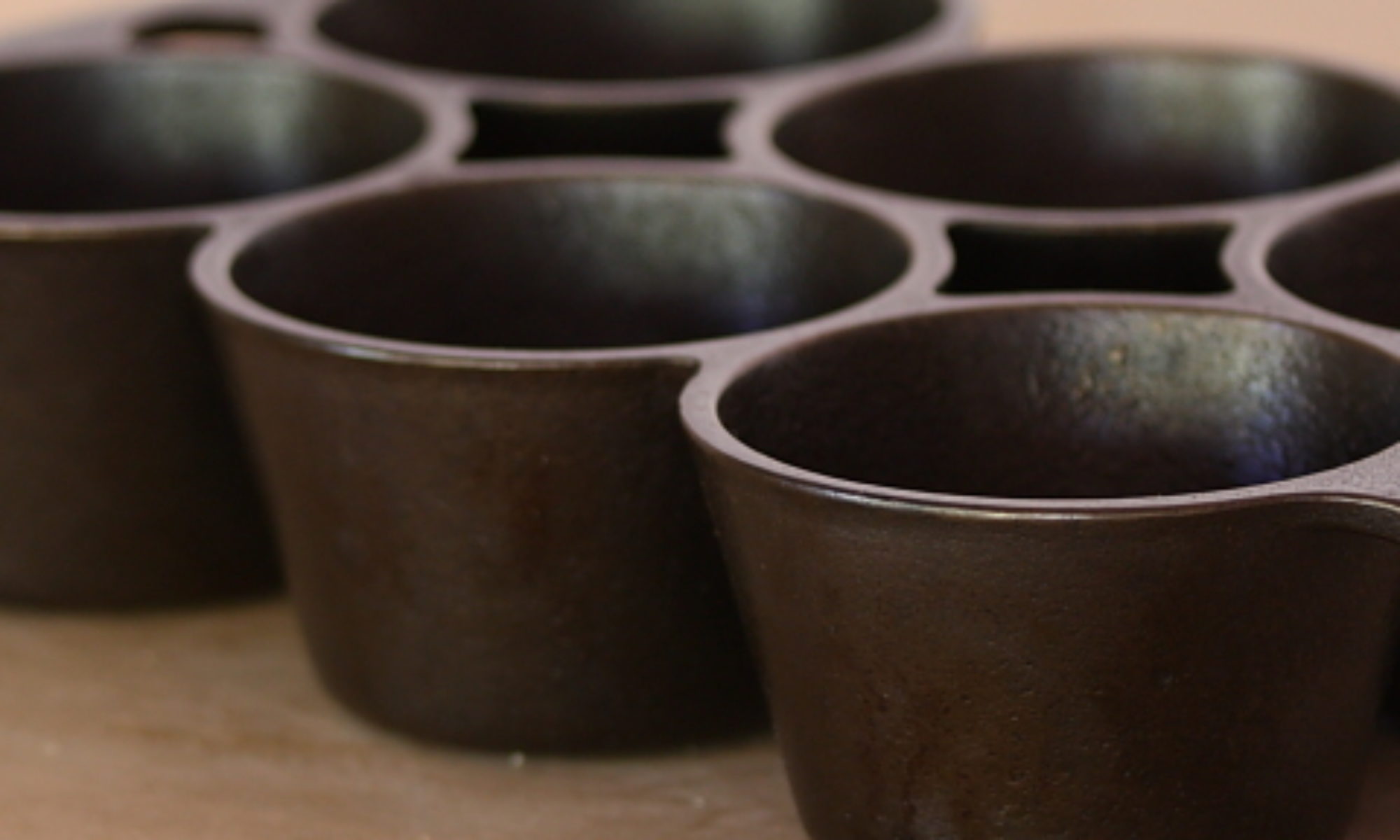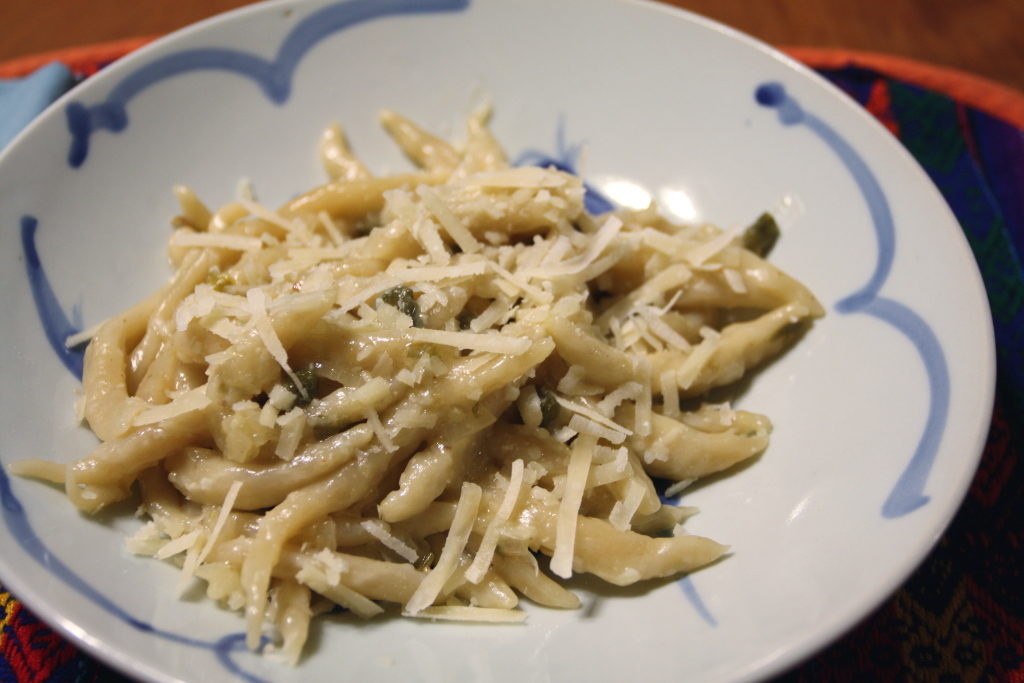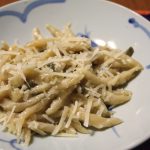
As dedicated readers of Scratchin’ It, you know we love to make pasta. Especially if the shape of the pasta is something we can form without the aid of a machine like an extruder or a pasta roller. Why? Well, we really think that fresh pasta is something everyone should make from time to time, and shapes that can be made by hand put pasta-making in everyone’s wheelhouse.
So, when we checked out a copy of Pasta by Hand, by Jenn Louis, from the library, we were excited and hoped to find a whole bunch of new pasta shapes that we could make with our pasta dough. We did discover a few, so you might see them in future posts. However, the book primarily contained recipes for different types of pasta, or, perhaps more accurately and to use the term employed by the author, dumplings.
Oh, according to Jenn Louis, cecamariti means husband blinders; they’re are said to be called that because husbands will be blinded by this delicious dish. Let’s check that for veracity by scratchin’ up some cecamariti.
Cecamariti
Ingredients
- 2 Tbs white wine (30 g)
- 1/3 cup warm water (105-110°F) (85 g)
- 2 tsp dried instant yeast (7 g)
- 1/2 Tbs honey (10 g)
- 1/2 Tbs extra-virgin olive oil (7 g)
- 1/2 tsp kosher salt (3 g)
- 1 1/2 cups all-purpose flour (210 g)
Instructions
- In a medium bowl, combine wine, water, and yeast. Stir until yeast is dissolved, then let stand until foamy, 10 minutes.
- Add honey, olive oil, and salt. Stir until honey and salt are dissolved.
- Add flour, stir until a soft dough forms, then turn out onto a clean work surface and knead until smooth, 5 minutes.
- Place dough in a lightly oiled bowl, cover, and let rise 1 hour.
- Cut off a piece of dough about an inch wide, and roll into a rope 1/2 inch thick. Cut the rope into pieces 1/2 inch long. Roll each piece of dough between your hands to make a tapered rope of pasta about 2 inches long. Place on a baking sheet lined with parchment or a silicone baking mat.
- Bring a large kettle of salted water to a simmer, add pasta, and cook until they float, removing with a slotted spoon and transferring to warmed bowls.
- Finish with your favorite sauce.
Ingredient discussion:
For the white wine, use something you like to drink. We chose Barefoot Pinot Grigio; we like it and it’s inexpensive. If you have an apiarist nearby, buy his or her honey to help support your community. Same with olive oil. We get ours from Queen Creek Olive Mill, just up the road. And, while it won’t matter much for this pasta, not all extra-virgin olive oils are extra-virgin. Yes, even the big names in the olive oil business cheat, so learn a bit about olive oil, and buy using that knowledge. A good place to start is Truth in Olive Oil.
Procedure in detail:
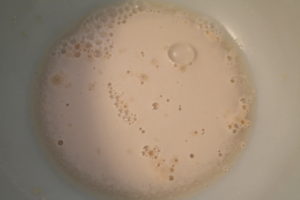
Proof yeast. To proof yeast simply means to test, or prove, that the yeast is alive. In a medium bowl, combine wine and warm water. Dip your finger into it; it should feel warm to the touch, but not hot. Add the yeast, stir until dissolved, and stand back for 10 minutes while the yeast comes alive and starts devouring the sugars in the wine. As it does, the yeast will produce carbon dioxide, making the liquid foamy. Once foamy, you know the yeast is alive and rarin’ to go. If your yeast mixture didn’t get foamy, wait another 10 minutes; after that, either you killed it with too-hot water, or your yeast has died of old age. Check the expiration date to decide if you want to try again, or if you need to buy more yeast. If your yeast is dead, you can give it a last toast with the wine before discarding.
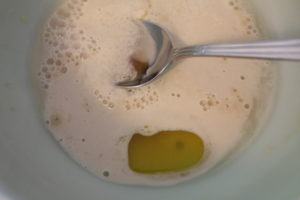
Dissolve honey and salt. Once the mixture is foamy, add the honey, olive oil, and salt. Stir until the honey and salt are dissolved. The oil, of course, never really mixes in, at least not until flour is present.
Make dough. Add the flour and stir until you have a soft, supple dough and all the flour has been incorporated.
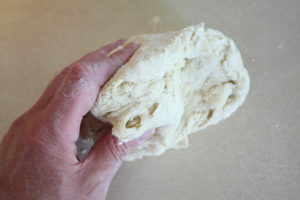
Knead. Turn out the dough onto a clean work surface and knead until smooth and supple, about 5 minutes. We will point out that one could use a mixer for this task, and everything could have been in a mixer bowl to begin with, but, we want to make this pasta completely by hand.
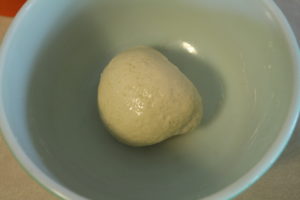
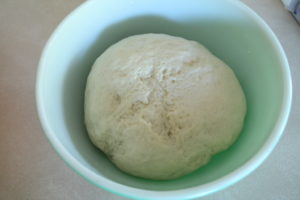
Rise. Place the dough in a lightly-oiled bowl, cover, and let rise for an hour. An easy way to do this is to dribble a bit of oil into a bowl, grab the dough and use it to swish the oil around, coating the bowl and about half the dough, then deftly flip the dough over into the bowl.
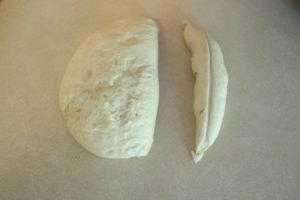
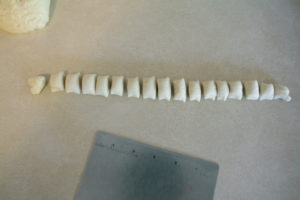
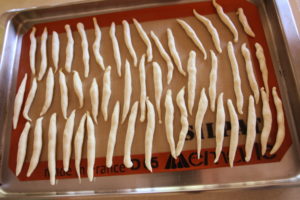
Shape. If you wish, you can push down the dough, but it’s not necessary, since it’ll deflate as you shape. Simply cut off a piece of dough about an inch wide, and roll it into a rope about 1/2 inch thick. Now, using a bench knife or scraper, cut the rope into pieces a 1/2 inch long. Roll each piece between your palms to form a thin rope with tapered ends. Looking at the picture will show you exactly what we mean. Place each cecamariti on a baking sheet lined with parchment and dusted with flour, or lined with a silicone baking mat. If you need to hold off on cooking, you can either cover with plastic wrap and refrigerate, or freeze and cook without thawing.
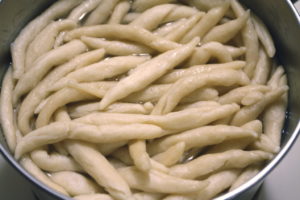
Cook. Bring a large kettle of salted water to a simmer. Add the pasta and simmer until they float to the surface and no longer have that raw dough taste, 1 to 3 minutes. Remove with a slotted spoon and transfer to warmed bowls. Finish with your favorite sauce. We went with a light, lemon-caper sauce.
These are like a cross between a dumpling and a pasta. More tender than pasta, but with a chewier bite than most dumplings. Plus, they seem to exude more starch than pasta, thickening the sauce. Keep this in mind when you choose a sauce, and select a light, thin sauce, knowing that a few minutes of standing with the cecamariti will result in a perfect consistency. Combine all those great features with the ease with which you can make these, and you have a five-star dish.
